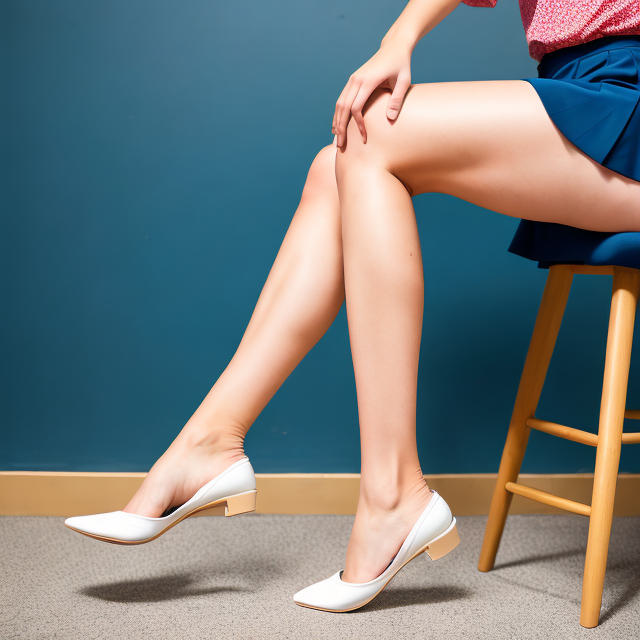Facelift FAQs: What You Need to Know Before You Decide
Posted on: February 13, 2023
Table of Contents
- When is it safe to go out in public after a facelift?
- What are the most effective procedures for lifting jowls?
- How long do swelling and numbness typically last after a facelift?
- At what age is it best to get a facelift?
- What can I expect in terms of swelling and bruising after a facelift?
- What type of anesthesia is used during a facelift?
- What treatments can I use to address my uneven face?
- What alternatives are available to treat sagging cheeks besides a facelift?
- How long will I experience tightness after a facelift?
- Will using a facelift belt help make my face appear more slim and V-shaped?
When is it safe to go out in public after a facelift?
It is generally recommended to wait at least two weeks before going out in public after a facelift. During this time, you should avoid strenuous activities, direct sunlight, and any activities that could cause your incisions to open. You should also follow your doctor’s instructions for post-operative care, such as wearing a compression garment and avoiding any facial expressions that could cause strain on the incision sites.
What are the most effective procedures for lifting jowls?
1. Facelift: A facelift is one of the most effective procedures for lifting jowls. It involves removing excess skin and fat from the lower part of the face and neck and then tightening the underlying muscles and tissue.
2. Neck Lift: A neck lift is a surgical procedure that can help to improve the definition of the jawline and reduce the appearance of jowls. It involves removing excess skin and fat from the neck and then tightening the underlying muscles and tissue.
3. Dermal Fillers: Dermal fillers are injections of hyaluronic acid or other substances that can help to plump up the skin and reduce the appearance of jowls.
4. Laser Skin Resurfacing: Laser skin resurfacing is a non-invasive procedure that can help to reduce the appearance of jowls by removing the outer layer of skin and stimulating collagen production.
5. Ultherapy: Ultherapy is a non-invasive procedure that uses ultrasound energy to stimulate collagen production and help to improve skin elasticity. It can help to reduce the appearance of jowls.
|
Cosmetic Alternative
|
Pros
|
Cons
|
|
Facelift
|
Long-lasting results, can improve multiple facial features, can provide a natural-looking result
|
Involves a surgical procedure, can be expensive, can require a long recovery time
|
|
Neck Lift
|
Can provide a natural-looking result, can improve multiple facial features, can provide long-lasting results
|
Involves a surgical procedure, can be expensive, can require a long recovery time
|
|
Dermal Fillers
|
No surgery required, can be done quickly, can provide immediate results
|
Results are not permanent, can be expensive, may require multiple treatments
|
|
Laser Skin Resurfacing
|
Can improve multiple facial features, can provide long-lasting results, can provide a natural-looking result
|
Involves a surgical procedure, can be expensive, can require a long recovery time
|
|
Ultherapy
|
No surgery required, can be done quickly, can provide immediate results
|
Results are not permanent, can be expensive, may require multiple treatments
|
How long do swelling and numbness typically last after a facelift?
Swelling and numbness after a facelift typically last for a few weeks, but can last up to a few months. During this time, it is important to follow your surgeon’s instructions for post-operative care and to keep the area clean and dry.
At what age is it best to get a facelift?
It is generally recommended to wait until you are in your late 40s or early 50s to get a facelift. This is because a facelift is a major procedure, and it is important to wait until your face has fully matured before making a decision about getting a facelift.
What can I expect in terms of swelling and bruising after a facelift?
Swelling and bruising are normal after a facelift. Swelling usually peaks within the first 48-72 hours after the procedure and can take up to two weeks to fully subside. Bruising may last up to two weeks, but can vary depending on the extent of the surgery. It is important to keep your head elevated and to apply cold compresses to the face to reduce swelling and bruising.
What type of anesthesia is used during a facelift?
What treatments can I use to address my uneven face?
What alternatives are available to treat sagging cheeks besides a facelift?
How long will I experience tightness after a facelift?
Will using a facelift belt help make my face appear more slim and V-shaped?
What type of anesthesia is used during a facelift?
Local anesthesia with sedation is typically used during a facelift.
What treatments can I use to address my uneven face?
1. Laser treatments: Laser treatments can help reduce the appearance of uneven skin tones. Examples include fractional laser treatments, laser resurfacing, and laser skin tightening.
2. Chemical peels: Chemical peels can help reduce the appearance of uneven skin tones by removing the top layer of skin and encouraging new growth.
3. Microdermabrasion: Microdermabrasion is a procedure that uses a device to exfoliate the skin and reduce the appearance of uneven skin tones.
4. Dermal fillers: Dermal fillers can be used to fill in areas of unevenness and help create a more even complexion.
5. Skin care products: Certain skin care products, such as retinoids and lightening creams, can help improve the appearance of uneven skin tones.
What alternatives are available to treat sagging cheeks besides a facelift?
1. Dermal Fillers: Dermal fillers can be used to add volume to the cheeks and reduce the appearance of sagging cheeks.
2. Ultherapy: Ultherapy is a non-invasive procedure that uses ultrasound energy to target deep layers of the skin and stimulate collagen and elastin production. This can help to lift and tighten the skin, reducing the appearance of sagging cheeks.
3. Micro-Needling: Micro-needling is a procedure that involves using tiny needles to puncture the skin and stimulate collagen production. This can help to reduce the appearance of sagging cheeks by tightening the skin and providing a lifting effect.
4. Botox: Botox injections can be used to temporarily relax the muscles around the cheeks, which can help to reduce the appearance of sagging cheeks.
5. Radiofrequency: Radiofrequency is a procedure that uses radio waves to heat the skin and stimulate collagen production. This can help to reduce the appearance of sagging cheeks by tightening the skin and providing a lifting effect.
How long will I experience tightness after a facelift?
The amount of tightness experienced after a facelift varies from person to person. Generally, you can expect to experience some tightness for up to two weeks after the procedure. The tightness should gradually improve as the swelling and bruising subside.
Will using a facelift belt help make my face appear more slim and V-shaped?
No, using a facelift belt will not make your face appear more slim and V-shaped. The purpose of a facelift belt is to help reduce wrinkles and sagging skin on the face, not to slim or reshape the face.





